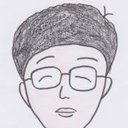A missense mutation in the SH3BP2 gene on chromosome 4p16.3 found in a case of nonfamilial cherubism.
Mots clés
Abstrait
OBJECTIVE
Cherubism is a rare hereditary multilocular cystic disease of the jaws, characterized by its typical appearance. Although nonfamilial cases have been reported, it is difficult to distinguish nonfamilial cherubism from central giant cell granuloma. Recent studies have revealed the point mutations in the SH3BP2 gene on chromosome 4p16.3 in cherubism families. In this article, the SH3BP2 gene in nonfamilial cherubism was examined.
METHODS
A 21-year-old Japanese woman with nonfamilial cherubism.
METHODS
Genomic DNA was purified from a blood sample obtained from the patient and used for direct sequencing. In addition, a sample of the lesion, resected during surgery, was used for histologic and immunohistochemical purposes.
RESULTS
Genomic DNA sequencing found a Pro418Arg mutation in the SH3BP2 gene of the patient. In a histochemical analysis, the multinucleated giant cells proved to be strongly positive for PGM-1, KP-1, and tartrate-resistant acid phosphatase and faintly positive for osteopontin.
CONCLUSIONS
The missense mutation Pro418Arg was identified in the SH3BP2 gene from a nonfamilial case of cherubism. DNA diagnosis may play a significant role in the identification of cherubism.


